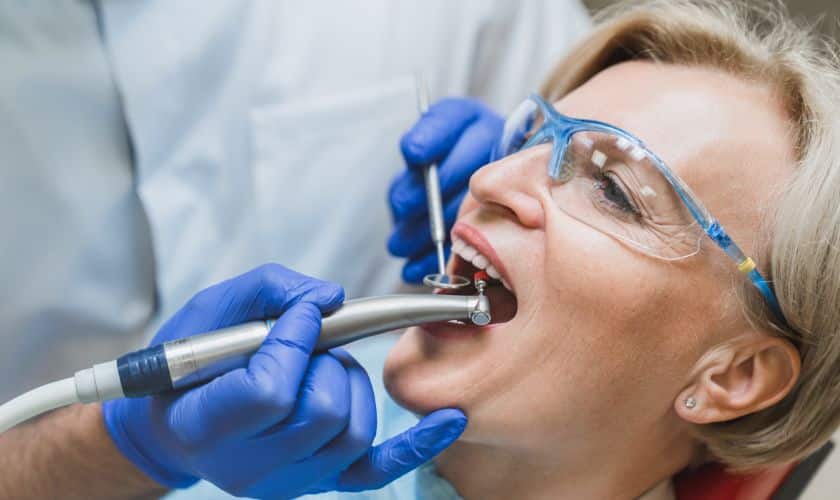If you’ve ever had a toothache, you know how unpleasant it can be. But if the pain is due to old fillings that are leaking, then replacing the filling may be necessary.
When Should I Replace Old Fillings?
The best time to replace old fillings is when they are cracked or chipped. If you have broken off a tooth and the cavity still remains, then you may want to have it filled again. If your old fillings have started leaking, then it’s time for new ones!
If you’re concerned about their quality and don’t want to risk more damage happening as a result of using them anymore, then replacing them is recommended as well. You can also consider getting rid of unsightly fillings that make your smile look less attractive than it could be if those spots were not there in the first place!
What Are the Risks of Leaving Old Fillings in Place?
Leaking mercury, silver and amalgam fillings are the most common problem with old dental restorations. These materials can release small amounts of mercury vapor that can be inhaled and absorbed into the body. The amount of mercury released by these fillings is extremely small and does not pose a significant health risk, but it may contribute to symptoms such as:
- Nausea
- Vomiting
- Diarrhea
- Dizziness
As you may have guessed, if you’re experiencing any of these symptoms and have old dental restorations in place, then you should probably get them checked out by a dentist!
How Do I Know If My Old Fillings Are Leaking?
If you suspect that one of your fillings has cracked and is leaking, there are a few ways to tell. First, look at the tooth itself. If there’s a dark stain on the surface of your tooth (usually toward the gum line), it might be an indication that decay has worked its way through the weakened filling and started eating away at more of the tooth structure.
Second, check for pain when chewing or biting down on hard foods like nuts or crackers; this could indicate that some pieces of broken off composite resin have gotten stuck in between teeth as well as under gums where they’re causing irritation and inflammation in surrounding tissues. The same goes if drinking hot liquids causes pain–if so, this could mean bits of plastic have melted into soft tissue along with other debris from an old crown or bridge fixture underneath where no longer bonded securely enough after years without proper care by regular dental visits!
How Do I Find A Qualified Dentist to Replace My Fillings?
To find a qualified dentist, start by asking friends and family for recommendations. You can also check out the websites of local dental schools and ask to speak with their alumni association. If your current dentist has been in practice for many years, he or she may be able to recommend other dentists who are good at replacing old fillings.
The ADA website lists all licensed dentists in your area by name, so it’s easy to look up whether or not they have any special qualifications (like being an endodontist).
While you should always consult with a dentist before replacing old fillings, there are some signs that indicate you need to replace your fillings as soon as possible.
While you should always consult with a dentist before replacing old fillings, there are some signs that indicate you need to replace your fillings as soon as possible. If you notice any of the following changes in your teeth, it’s likely time for a new filling:
- An obvious change in shape or colour
- A loss of bite or chewing ability
- Changes in taste
Conclusion
If you are having trouble with your old fillings, it’s time to contact a dentist. Don’t wait until it’s too late!
FAQ
-
What are old fillings?
Old fillings are dental restorations that have been in your mouth for 10 years or more. They can include amalgam (silver), composite (white), and gold fillings.
-
Do I need to replace old fillings?
The answer to this question depends on the condition of your teeth, and whether or not you’ve had any complications with your old fillings in the past. If you’re experiencing pain or sensitivity in a tooth with an older filling, it may be time to consider replacing it with a fresh one. But if you’re healthy and happy with the appearance of your smile, there’s no reason to replace an old filling unless it becomes damaged or cracked.
-
How do I know if an old filling needs replaced?
If you’ve had a tooth filled for more than 10 years and experience pain or sensitivity in that tooth, or if you develop decay around the area where the filling was placed, it may be time to consider replacing your old filling with a new one so that you can avoid further complications down the line!
